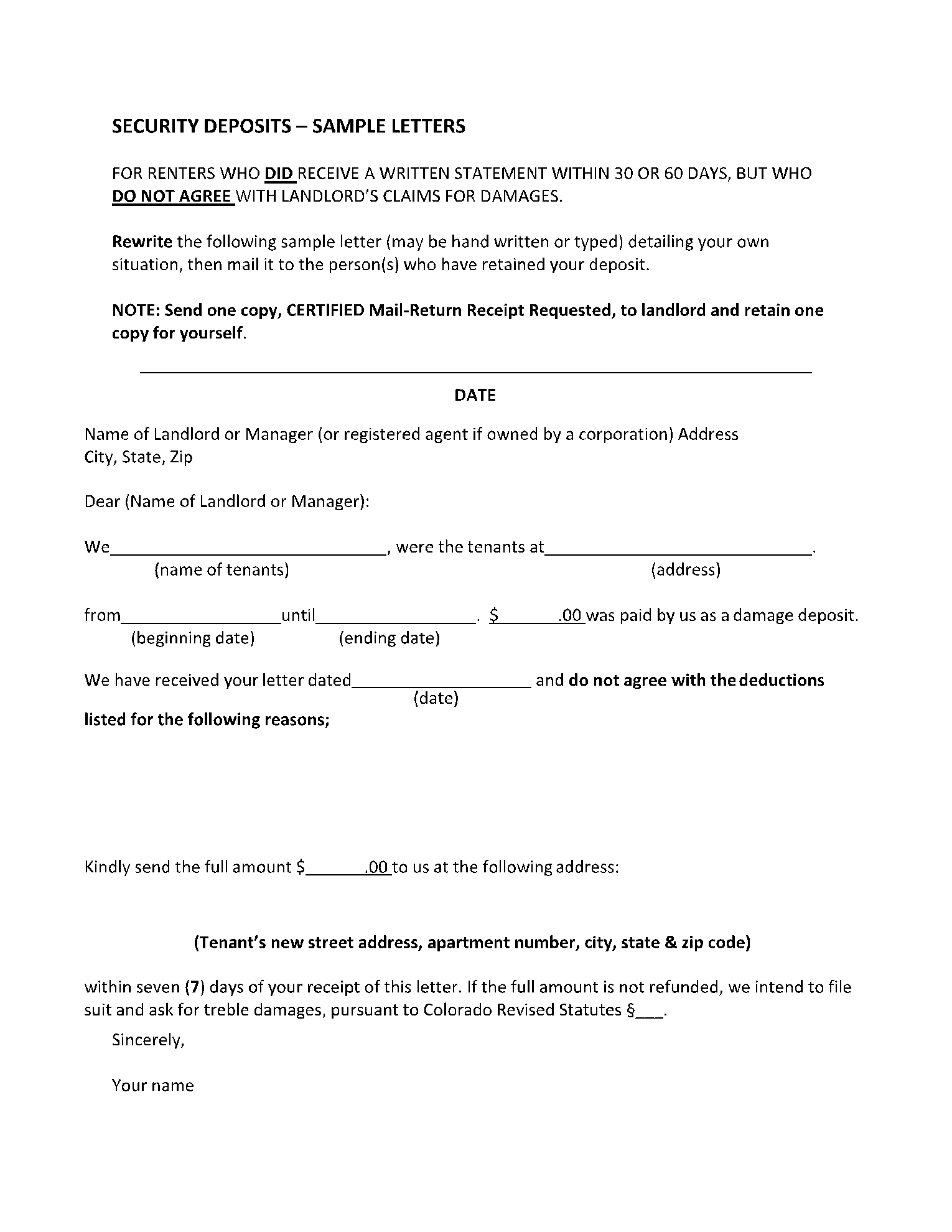A security deposit demand letter is usually written if your landlord hasn’t paid your deposit back after you moved out. We explain everything you need to include in this letter, and how it works differently from state to state.
If you already know how security deposit demand letters work, you can jump right to the free template at the end to draft your letter.
What Is a Security Deposit Demand Letter?
A security deposit demand letter is a formal request for money to your landlord. You write this letter if they haven’t paid you your deposit money, which you put down at the beginning of the rent agreement.
You must write this letter after a certain period has passed since you moved out – usually 14 to 60 days. You include a due date by which you expect them to pay your money back. If they fail to comply, you may take the case to small claims court.
Besides requesting your security deposit funds back, you can write a security deposit demand letter in several related instances:
- Money wasn’t placed in a separate account: Some states require the landlord to deposit the money in a separate account. You can request them to do that.
- Failed to transfer to a new owner: If your landlord sells the house or other property but doesn’t transfer the security deposit to the new owner, then you can ask them to do so.
- There was no receipt: Some states require that your landlord furnish a security deposit receipt when they give you your money.
- No checklist: Your landlord must provide an inventory checklist in some states.
Why Do You Need a Security Deposit Demand Letter?
When someone rents a property, the landlord asks for a security deposit to protect against damages caused to the property due to negligence. If the renter breaks appliances, damages the carpet, or puts a dent in the wall, the landlord has to repair these damages before they can rent the property anew.
Landlords and property management companies often deduct a large portion of the security deposit. Sometimes they fail to return it altogether. They may or may not provide you with an itemized receipt.
- You can dispute the deductions made or their failure to give you your money back with a deposit demand letter.
- No one wants to go to court. The letter may galvanize your landlord into action.
- The letter allows you to better plan out your case.
- The letter becomes evidence in court.
What Is Included in a Security Deposit Demand Letter?
When your landlord misses the return deadline – or fails to perform some other obligation – then you may begin writing the letter. We suggest you get acquainted with your state’s rent and return laws beforehand. The security deposit demand letter include the following:
- Landlord’s name, address, and other relevant details.
- The original lease date, when you moved out, and the 30-days notice you gave to the landlord.
- The state of the building – including details of any repairs you may have carried out.
- The state laws they are failing to abide by.
- The demand for money or some other action.
- A deadline by which you want them to pay your money back.
Expert Suggestions
We recommend reading the following suggestions before you write the letter:
- It’s a good idea to call the landlord or email them and settle the matter informally.
- If that’s not possible, write a formal, polite letter. The tone must be non-threatening.
- Keep the letter short and to the point.
- If you aren’t aware of state laws, please research them. Consult an attorney if you can.
- The letter must quote your state’s applicable law.
- You should send the letter by certified mail with a return receipt.
- Make copies of the letter.
- Document all the details about your rental agreement, you may need them later.
Conclusion
Reasonable landlords usually settle their dues immediately – or at least keep you informed of delays. If your landlord hasn’t paid you back, chances are they don’t want to. It’s highly likely you will have to take them to small claims court.
You can use CocoSign’s free security deposit demand letter template to draft a concise, effective letter. We also provide free templates on our website for other common scenarios.
